|
John Tyman's Cultures in Context Series EGYPT and the SAHARA www.johntyman.com/sahara |
|
3.2 Judaism and Christianity :: Pt. II 180-195 |
| . |
|
John Tyman's Cultures in Context Series EGYPT and the SAHARA www.johntyman.com/sahara |
|
3.2 Judaism and Christianity :: Pt. II 180-195 |
| . |
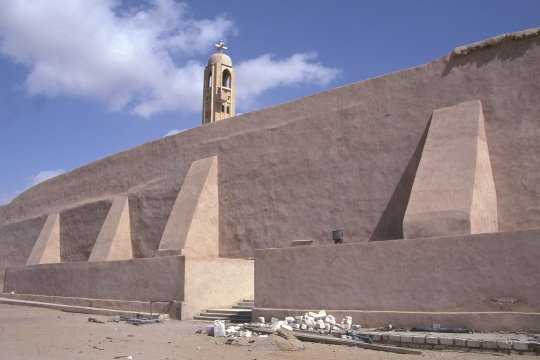 |
| .180. Having been attacked on several occasions, and even sacked, both before and after the arrival of Islam, the community at Wadi Natrun was progressively fortified, surrounded by high walls. |
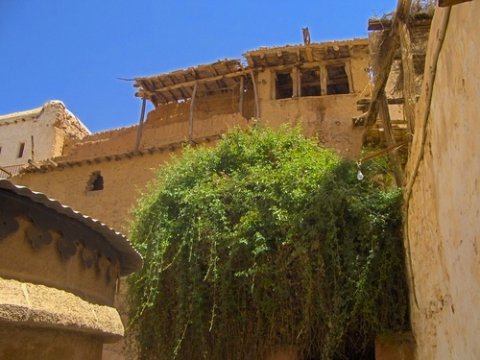 |
| .187. The monastery was built by order of the Emperor Justinian to enclose the chapel that had been built previously by order of Constantine’s mother Helena in the year 330 on the site of “the burning bush”. And the monks here still care for what they believe to be the bush where Moses met with God. (The “burning bush” of today, at St. Catherine’s Monastery courtesy Google.com) |
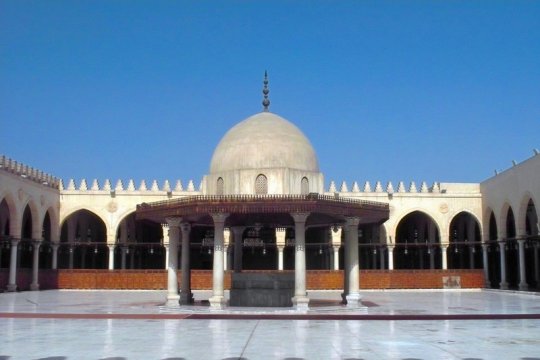 |
| .193. Though many Christian communities in North Africa disappeared -- through martyrdom or conversion to Islam -- as the Arabs armies pushed westwards, violence was not inevitable. When the Muslims conquered Egypt, Caliph Omar’s general (Amr Ibn al-As) promised to respect church property and not to interfere in church affairs. He allowed Copts who held public office to retain their positions, and he conferred new offices on others. (Courtyard of the Amr Ibn al-As Mosque in Cairo courtesy w3toplisting.com) |
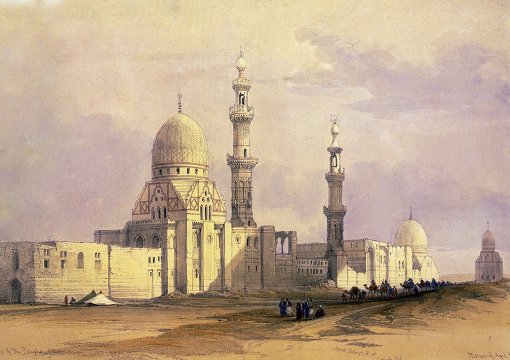 |
| .194. However, later Caliphs imposed heavy taxes, placed all government in Arab hands, forbad the display of Christian symbols and the wearing of vestments, destroyed churches and monasteries (confiscating their property), and suppressed ruthlessly those who rebelled. (Print dated 1840 by David Roberts of “The Tomb of the Caliphs” in Cairo : Wikipedia) |
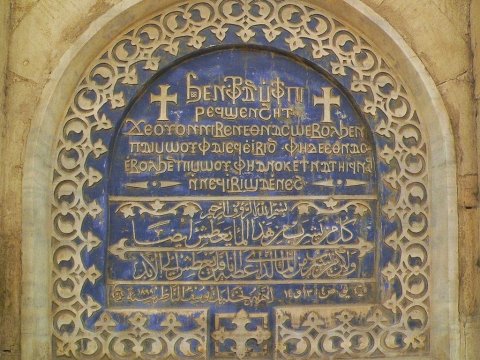 |
| .195. In 706 they made Arabic the language of government, replacing the language of the Copts ... which thereafter declined in use to the point where in the 12th century they had to translate their liturgy into Arabic since the Coptic tongue was then spoken only by a minority. (Inscriptions in Arabic and in the language of the Copts, at a church in Cairo courtesy Wikipedia) |

![]()
Text and photos by John Tyman
unless otherwise indicated.
Intended for Educational Use
Only.
Contact Dr. John Tyman at johntyman2@gmail.com
for more information regarding
licensing.
![]()
www.hillmanweb.com
Photo processing, Web page layout,
formatting and hosting by
William
Hillman ~ Brandon, Manitoba ~ Canada